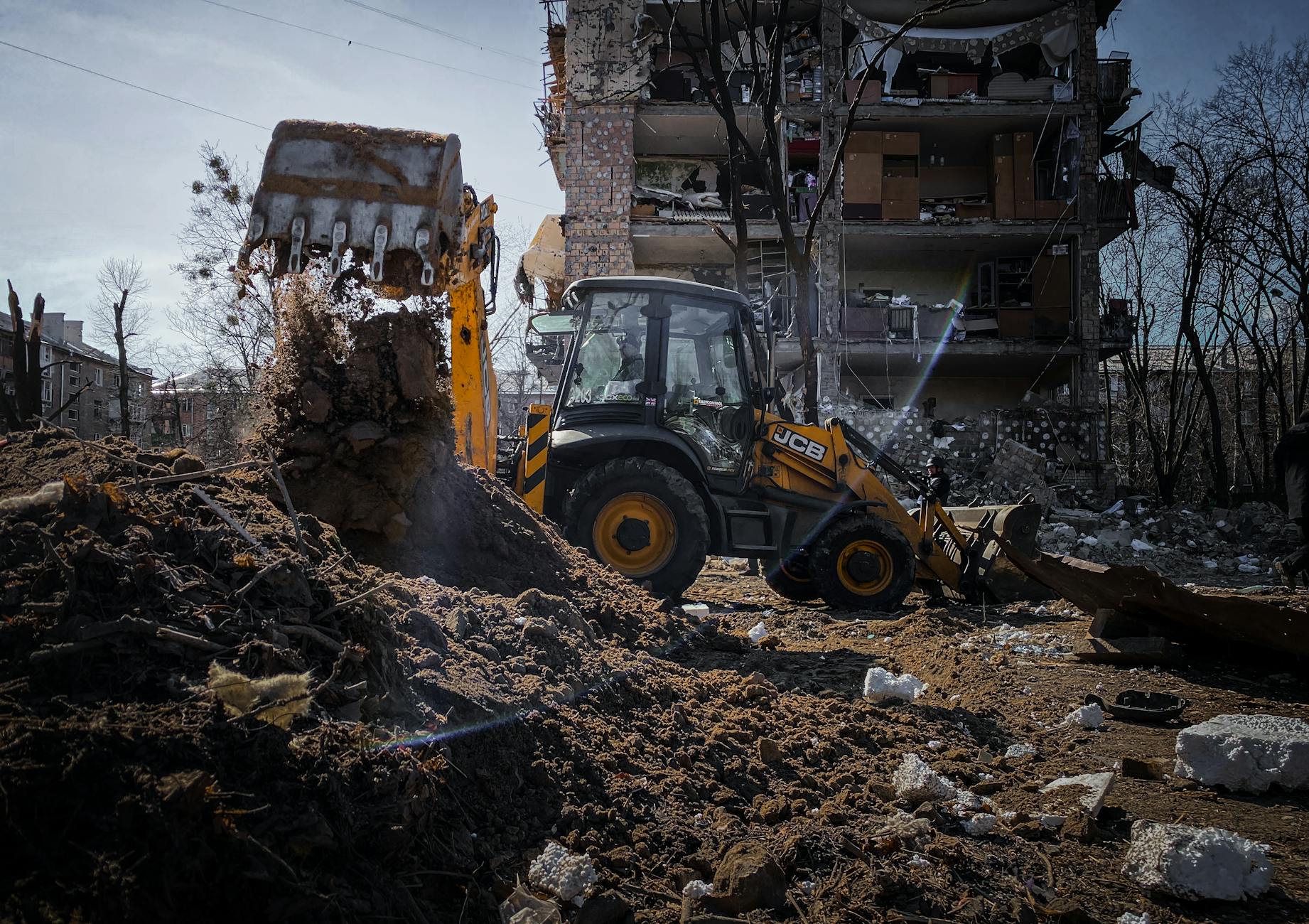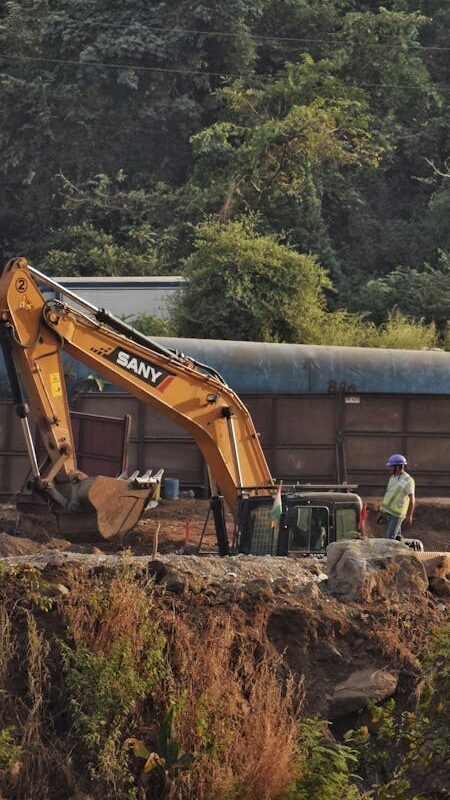
Introduction
Trenching and excavation work is more than just digging through the earth. It’s a highly technical process that demands respect for the forces of nature and understanding of the engineering principles that keep us safe. The weight of the earth is unforgiving; a cubic yard of soil can weigh as much as a car, making a trench collapse not just a possibility but a deadly event if safety measures are not in place.
The significance of today’s talk is not just to share these grim statistics but to underscore the critical need for rigorous safety measures. We are here to learn, to understand, and to apply these safety practices diligently. Our commitment to safety can turn these statistics around, ensuring that every worker returns home safely at the end of the day. Let’s dive deeper into the precautions and protocols that not only comply with regulatory standards but also create a culture of safety that protects us all.
The Dangers of Trenching & Excavation
Statistics paint a stark picture of the reality we face in trenching operations. According to data from the Bureau of Labor Statistics and OSHA, trench collapses cause dozens of fatalities annually in the construction industry alone. Moreover, these incidents result in hundreds of injuries, many of which are life-altering. The distressing truth is that all these accidents were preventable with proper planning, execution, and safety precautions.

OSHA’s Training Requirements:
Training employees on trenching hazards is a critical component of maintaining a safe work environment, especially in construction and other industries where excavation work is common. According to the Occupational Safety and Health Administration (OSHA) and its 1926 standard, specifically subpart P, employers are required to ensure that all employees involved in trenching and excavation are adequately trained on the hazards associated with these activities. This is not just a recommendation; it’s a legal requirement aimed at preventing accidents and fatalities associated with trench collapses and other related incidents.
Importance of Training
The training mandated by OSHA is designed to equip workers with the knowledge and skills necessary to identify risks and follow proper procedures to mitigate them. It covers a range of topics, including but not limited to, the recognition of environmental and other hazards that may increase the risks associated with trenching and excavation work. The training also includes instruction on the use of protective systems, the importance of access and egress points, and the need for regular inspections of excavation sites.

Role of the Competent Person
A crucial element of OSHA’s trenching and excavation safety requirements is the designation of a “competent person.” This term is defined by OSHA as someone who is capable of identifying existing and predictable hazards in the surroundings or working conditions which are unsanitary, hazardous, or dangerous to employees, and who has authorization to take prompt corrective measures to eliminate them.
The competent person plays a pivotal role in trenching safety. Their responsibilities include:
- Inspecting Trenches: Before work begins and as needed throughout the shift, especially if a hazard has been introduced (e.g., rainwater accumulation).
- Implementing Protective Systems: Based on the depth and conditions of the trench, the competent person selects and implements appropriate protective systems, such as sloping, shoring, or shielding, to protect workers from cave-ins.
- Monitoring Water Removal Equipment: If water is being controlled by pumps, the competent person ensures the equipment is functioning correctly and that the trench remains safe for workers.
- Conducting Atmospheric Tests: In situations where there is a potential for hazardous atmospheres (due to the presence of gas lines, for example), the competent person tests conditions to ensure they are safe for entry.
Training for the competent person is more extensive, given the critical nature of their role. They must not only be able to recognize hazards but also have a thorough understanding of OSHA standards, protective systems, and emergency response procedures.
Preventing Collapses
When it comes to trenching and excavation, one of the primary concerns is preventing collapses. To safeguard workers, OSHA has established specific requirements for benching, sloping, shoring, and other protective systems under its 1926 subpart P standards. Each method addresses how to stabilize the walls of excavations to protect workers. The choice among them depends on factors like soil composition, depth of the trench, water content of the soil, changes in weather or climate, and other operations in the vicinity.

Sloping
Sloping involves cutting back the trench wall at an angle inclined away from the excavation. The angle of the slope will vary based on the assessment of soil type according to OSHA’s classifications:
- Stable Rock: Vertical walls are permissible since stable rock is unlikely to crumble.
- Type A Soil (e.g., cohesive soils with unconfined compressive strength of 1.5 ton per square foot (tsf) or greater): A slope of ¾:1 (horizontal:vertical), which means for every 3 feet horizontally, the trench must be sloped down 4 feet.
- Type B Soil: A slope of 1:1 is required.
- Type C Soil (e.g., granular soils including gravel, sand, and loamy sand, or submerged soil or soil from which water is freely seeping): A more gradual slope of 1½:1 is mandated.
Benching
Benching is the process of creating steps or benches on the sides of an excavation to prevent cave-ins. However, benching cannot be used in all types of soil. For instance, Type C soil is generally considered too unstable for benching. The specifics of benching dimensions, like the width of the steps and the height, again depend on the soil classification and must adhere to OSHA standards.
Shoring
Shoring involves installing supports such as hydraulic jacks, pneumatic systems, or timber shoring in trenches to prevent soil movement and collapses. Shoring is designed to brace trench walls to prevent cave-ins and is especially critical in trenches that are deeper or in less stable soil. The specifics of the shoring system used will depend on factors like the depth of the trench, soil type, and expected load on the system.
- Hydraulic Shoring: A popular choice due to its adaptability and ease of installation, involving aluminum or steel hydraulic cylinders that can be adjusted to the size of the excavation.
- Pneumatic Shoring: Similar to hydraulic shoring but uses air pressure to hold the shores in place.
- Timber Shoring: Traditional method using lumber and plywood. It’s more labor-intensive and requires careful design and installation.
Additional Considerations
- Design and Installation: The design and installation of sloping, benching, and shoring systems must be done under the guidance of a competent person. For deeper trenches or more complex situations, the design may need to be developed by a registered professional engineer.
- Inspection: These protective systems must be inspected at the start of each work shift, following any occurrence that could have affected their structural integrity, and after any event that may have exposed workers to additional risks (e.g., heavy rain).
- Compliance and Safety: Employers must ensure that all protective systems meet OSHA’s requirements and are appropriate for the conditions of the excavation site. The safety of the workers should always be the top priority, with continuous monitoring and adjustments as necessary to mitigate risks.
Understanding and implementing these requirements is crucial for the safety of workers involved in trenching and excavation work. By properly applying sloping, benching, or shoring techniques, employers can create a safer work environment that minimizes the risk of cave-ins and other excavation-related incidents.
